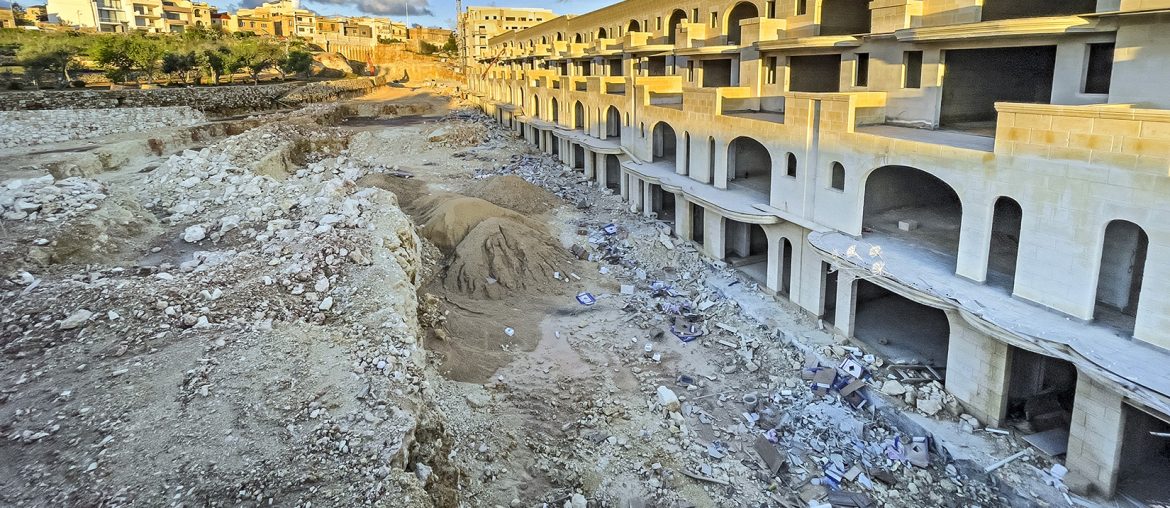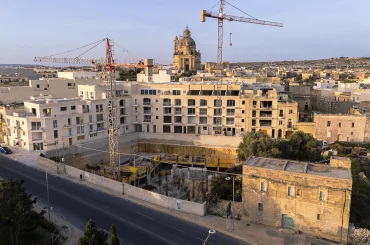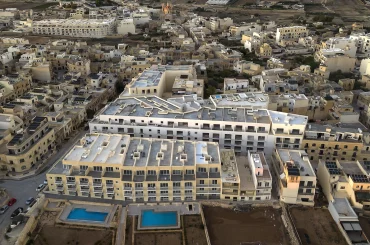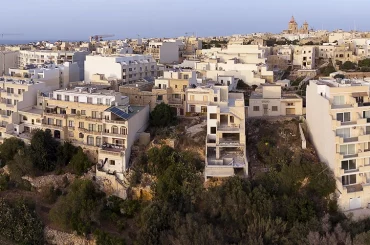You might have noticed that when it comes to media coverage of rampant development, Gozo has been getting a disproportional amount of attention. By disproportional I mean this: Gozo holds less than 10 percent of the national population and less than 30 percent of the national territory, but it gets a greater share of news on overdevelopment than its proportional size.
In fact Gozo has become very much the story – and the symbol – of development gone on the rampage and the planning system gone perverse.
There is a statistical reason for this: figures that emerged earlier this year showed that a fifth of all pending development applications were in Gozo. Yet Gozo has another quality that makes development on the sister island the greater planning emergency: significant parts of Gozo can still be saved from excessive development if we act now.

There is much angst about destructive development in Gozo, and this is reflected in last Spring’s request to the government by all of Gozo’s mayors to suspend the policy document called DC15, which was formulated in 2015 and which is blamed for unleashing waves of multi-storey blocks of flats that are steadily turning Gozo into a new Bugibba.
Although there is widespread revulsion at the prevailing blocks of flats that are disfiguring urban areas and rural vistas in Gozo, the grim news is that the government has remained largely indifferent.
And opposition MPs, instead of capturing and channeling the groundswell of concern, have been largely absent on the issue.
What is the nature of the problem?
The greatest contribution of DC15 to overdevelopment is a redefinition of height of buildings in residential zones. Instead of number of floors permissible, as before, we now have height limitation in metres. This has allowed developers to cram in more floors within the new height-limit. In turn this led to two dynamics: higher blocks of flats overall (partly because developers utilize the entire height-limit, instead of simply building three floors and receded fourth floor as before), and blocks of flats that are dense, bulky and unsightly.

Yet the redefinition of height-limitation policy in metres is only one aspect of wider changes that have perverted the planning system.
Another aspect is the dismantling of legislative control measures. For example, in amendments to planning law in 2016 the government introduced the concept of summary procedure for small-scale applications, which are development of less than 16 units or flats. This has made blocks of flats in Gozo – most of which are comprised of less than 16 flats – liable to be granted easy permits in a desk, box-ticking process. Applications under summary procedure do not go to planning board.
This also opened one route for development permits in certain cases to be granted in a fragmentary manner, with the end result being a building that would probably have not been granted permit if the full-scale building had to be presented in one single application at the outset. In this sense, wittingly or unwittingly, the summary procedure has opened a loophole and contributed to the perversion of planning system.
An article published on this website has detailed such fragmentary process in two adjoining blocks. It is a story that shows what a farce planning in Malta has become. The story details one case of a penthouse completed bit by bit over five development applications, starting with a domestic store and ending up with a penthouse that boasts country views.
A rural policy rolled out in 2015 also opened loopholes for urban encroachment beyond the development zone. It has allowed ruins to morph into villas, and disused farms into country villas. The latter can become a trick: if you have an animal farm that goes bust, you eventually find yourself sitting on a disused or ruined farm potentially worth millions.
The rural policy also permitted swimming pools beyond development zones, something that is having the effect of steadily expanding development zones, swimming pool by swimming pool.
Ridges in Gozo being pulverised
A range of loopholes brought about by policy and legislative changes in 2015 and 2016, as well as permissive planning boards that interpret the policies even more loosely, has led to proliferation of development spilling into outside development zones as well as forbidding blocks of flats usurping cliff-edges in Gozo.
The cliff-edges or ridges have long been considered a sensitive transition zone due to visual impact as well as impact on one of the main habitats in the Maltese Islands, the maquis. The term maquis, which is a French word, refers to the rich tapestry of trees and shrubs that in Gozo thrives at the base of inland cliffs.

As such, specific policies were formulated in the Gozo Local Plan, which was published in 2006, to protect ridges from unsightly, dense, and destructive developments. The intention was to avert developments of flats that loomed on cliff-edge or, worse still, spill down the cliff face and destroy maquis habitat.

These policies largely averted permits for blocks of flats spilling down the inland cliffs for more than 10 years. That changed in 2017 or 2018, when permits started to be given for blocks of flats of 5-8 storeys on cliff edges. These permits allowed developers to dig into the cliff itself, and then build over the maquis.

These blocks of flats are not only destroying parts of the maquis, they are also pulverizing cliffs in a way never seen before.

Government remains unfazed despite widespread concern
Most of these flats are being snapped up by Malta-based residents in a rush that is reminiscent of a similar rush to buy flats in Bugibba and Qawra in the 1970s and 1980s.
In Gozo, buyers are attracted by the idea that these flats serve as an investment as well as a weekend pad.
The irony is that the rush – like the headlong economic rush that it is – is undermining the fundamentals that triggered that rush in the first place, which is the rural and cultural attractiveness of Gozo.
This has in turn led to widespread concern among the populace and civil society organisations about the threat to Gozo’s way of life and economic wellbeing of the blocks of flats sprouting up everywhere. The fear is that these developments will damage Gozo’s touristic attractiveness in the medium or long-term, and forever ruin the island’s way of life.
As prices in Gozo continue to rise more steadily than elsewhere in the Maltese Islands, the fear is growing that this is a speculative bubble that will burst sooner or later.






2 Comments
What on earth is going on here? Roads are covered with debris and blobs of concrete. Does a degree in Town Planning not exist here?
Stopp this Madness and stopp Portelli and his Comrades !
Every third road is in the moment occupied bey cranes and other Building Tools .
Every day i have to find a new way to reach my target . Who is paying me for the time and Diesel please ?
If the Athorities are not stopping this , it will be soon or later give a big desater with them !
How many people living on Gozo and how many Flats are existing and are in building ?
3 times more or much more ? FOR WHOM ???
Where is all this money coming from ???
Corruption , Black Money ???